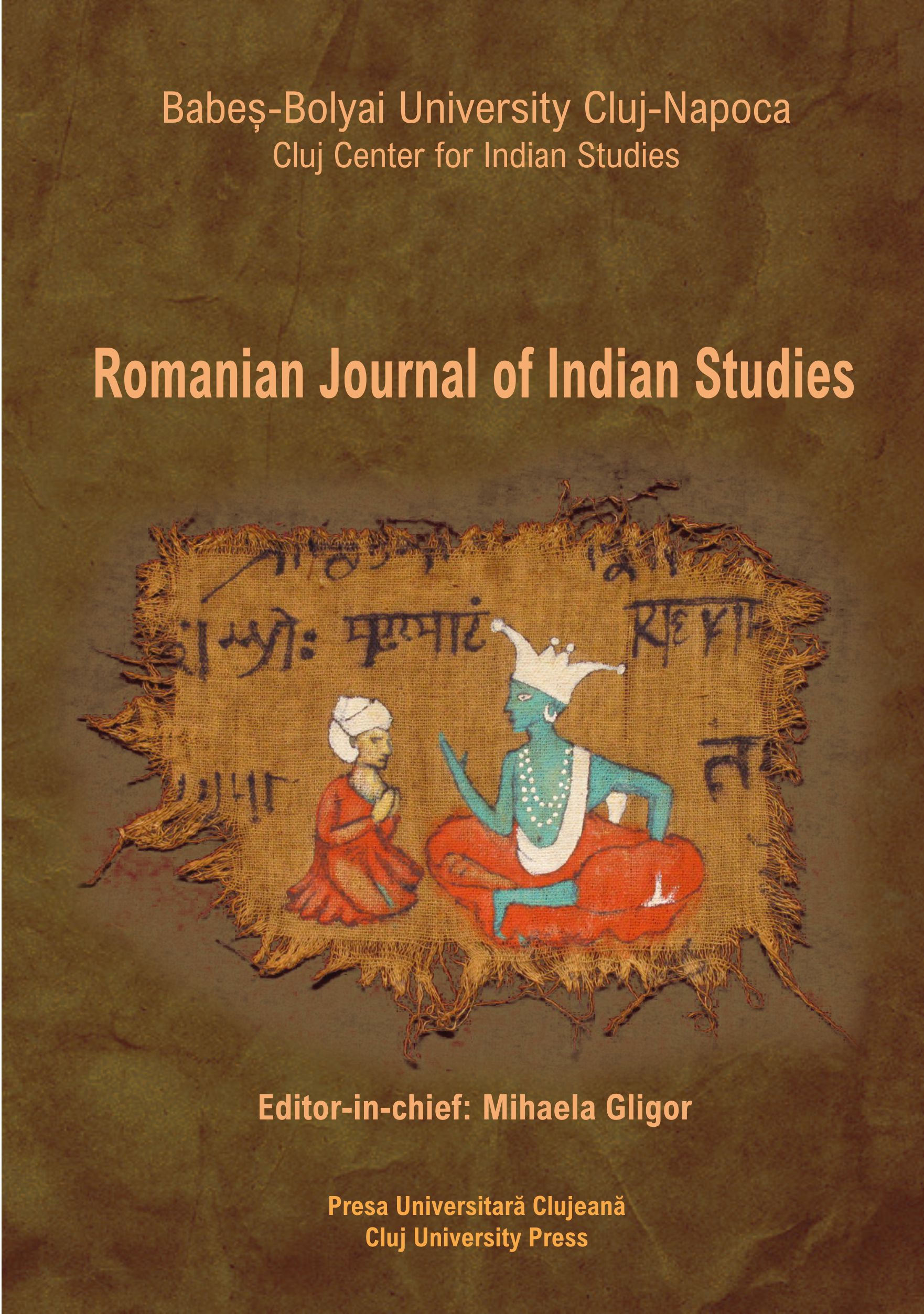
We kindly inform you that, as long as the subject affiliation of our 300.000+ articles is in progress, you might get unsufficient or no results on your third level or second level search. In this case, please broaden your search criteria.

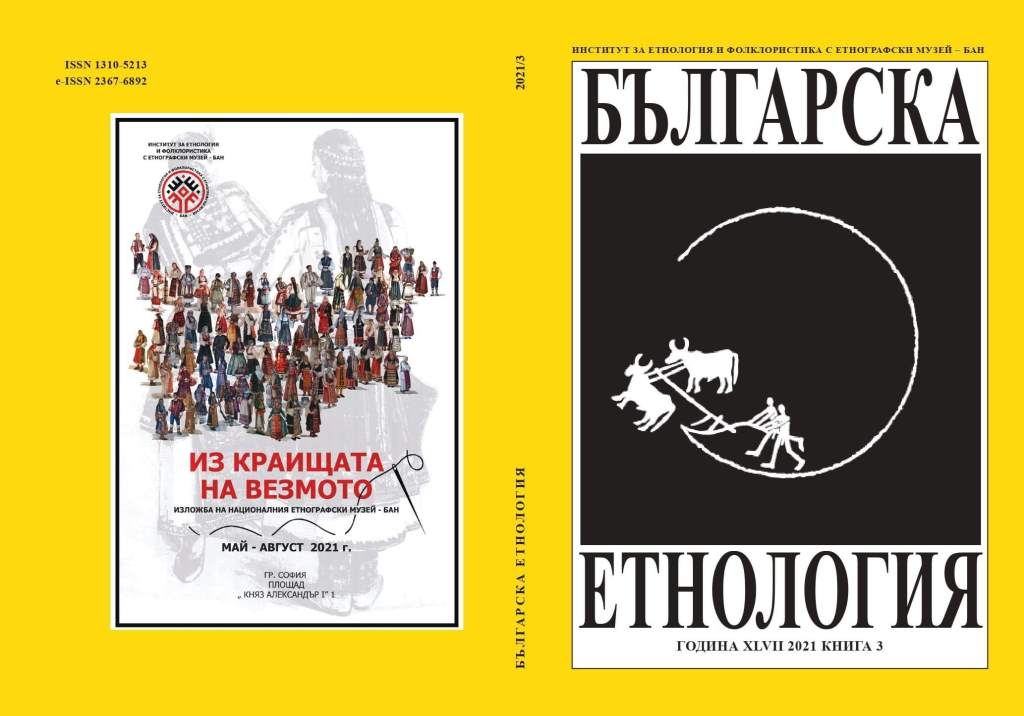
The article deals with the way history is experienced today. In Bulgaria it tends to move from the high rituals of the nation-state towards the realm of popular culture, being consumed in the form of entertaining fantasy plots, amateur science, touristic kitsch or historic reenactments (the latter are at the centre of the present text). Such consumerist attitude operates an invisible turn: it is not the past that ethically predetermines present actions, it is the contemporary consumer who chooses a past to experience.
More...
This paper explores the interactions between Thracians and Romans visible in historical reenactments in Bulgaria. Situated at the periphery of Classical Antiquity, Bulgarianhistoriography is strongly interested in the indigenous past. The idea of an alternative national Antiquity where autochthonous Thracians are imagined as equally important as Ancient Greeks and Romans has been promoted intensively through academic and cultural activities since the late 1960s. Beyond the official discourse, however, the Roman past appears to be more common among reenactors in Bulgaria than the Thracian one. Drawing upon ethnographic fieldwork during thematic festivals in several heritage sites, the article traces some of the contemporary representations of the Thraco–Roman relations. It examines the simultaneous heritagization of Classical and native Antiquity, and questions how modern identities are connected to living history and its ambivalent dependency on cosmopolitism and ethnonationalism.
More...
The paper is focused on historical reenactments of the so-called Bulgarian NationalRevival Period. The main approach is history-based, using the well-known periodization. It starts with the first documented historical reenactments, following with later history reconstructions, which can be observed nowadays. Historical reenactments are studied in close relation with their history narrative versions – official, unofficial, popular, banal, academic while being largely based on the official-unofficial dichotomy, putting it into question. The empirical material is drawn from the initial footsteps of the historical reenactments, which took place after the co-called Liberation (3.3.1878) to the First World War, following the interwar period, socialist nationalism, and the post-socialist decade sat the end. Numerous interviews, made by the “Historical reenactments as a cultural phenomenon” research project team are involved. A set of questions are raised: which episodes of Master narrative of the NationalRevival are subject of particular interest by reenactors; why they prefer them; howreenactors conceptualize processes of globalization of society and deconstructiveapproaches in social sciences; how they consider their own reenactments ideas – asofficial, or as unofficial, alternative ones; when they claim for alternativity, how thisnotion is regarded and what they see as official; why narrative for history, seen byreenactors as official, is perceived as unsatisfactory; how their claims unofficiality paradoxically leads to reinforcing the official Master narrative. One of the main points of the research is tracing the history the relation between popular nationalism and institutionalized one from the last decades of 19 c. to the first 20 years of 21 c.
More...
In recent years, so-called historical reenactments have become quite popular. Over time were formed groups of its “fans“ as well as critics. Thus, different research views on this phenomenon are a logical fact. By coincidence of life circumstances, I am in a position to allow a specific study of historical reenactments “from within“, because, in addition to being an ethnologist and museum curator, I am also an active historic reconstructor who participates in reenactments. In this study, I am looking through six historical reenactments in which I have directly participated, recreating three types of personalities – an ordinary unmarried young man from pre-industrial Bulgarian society, a clergyman from the Middle Ages and the Revival and a Bulgarian volunteer from the Russo-Turkish Liberation War(1877 – 1878). My target is, based on the “experience“, to look for the parameters of merging the present with the past in historical reenactments. What is the main reason for a modern person like me to look for a merger with a person from a bygone historical period and is it possible to do more than “playing“ in two events happening simultaneously – “once there“ and “here and now“. To answer this question, I use the method of personal history and critical self-reflection, analyzing the personal experience.
More...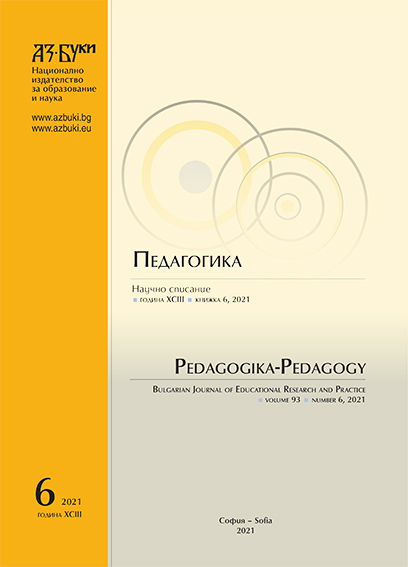
The establishment of the Viena Pedagogium was in response to the need of more accessible and better education. With its structure, education plans and focus on practice, the Academy became one of the leading educational institutions not only for Austria but for the whole of Europe. A large part of its success was due to its first principal, the great educator Friedrich Dittes famous for his reforms in the field of education. The influence of the Vienna Pedagogium is very significant for Bulgaria due to the fact that ten Bulgarian students successfully graduated from it and used their newly gained knowledge to help build up modern Bulgarian education system after the Liberation of Bulgaria
More...
The proposed material is a modest attempt to connect the time of the Bulgarian Enlightening and the role of assistant teacher then with our time now and another ambition of the Bulgarian state to implement in the pre-school and school education the auxiliary position of “educational mediator”. For educational practice, the mediator is primarily intended for specialized work with Roma children and students and their parental communities to ensure their participation in educational institutions. The article also offers the opportunity to apply the Renaissance experience in the training of today's educational mediators, in the same way as the assistant teachers of that time. Their path was predetermined – from assistants they grew into the most famous teachers and scholars of their time. Why do we not take advantage of this experience today?
More...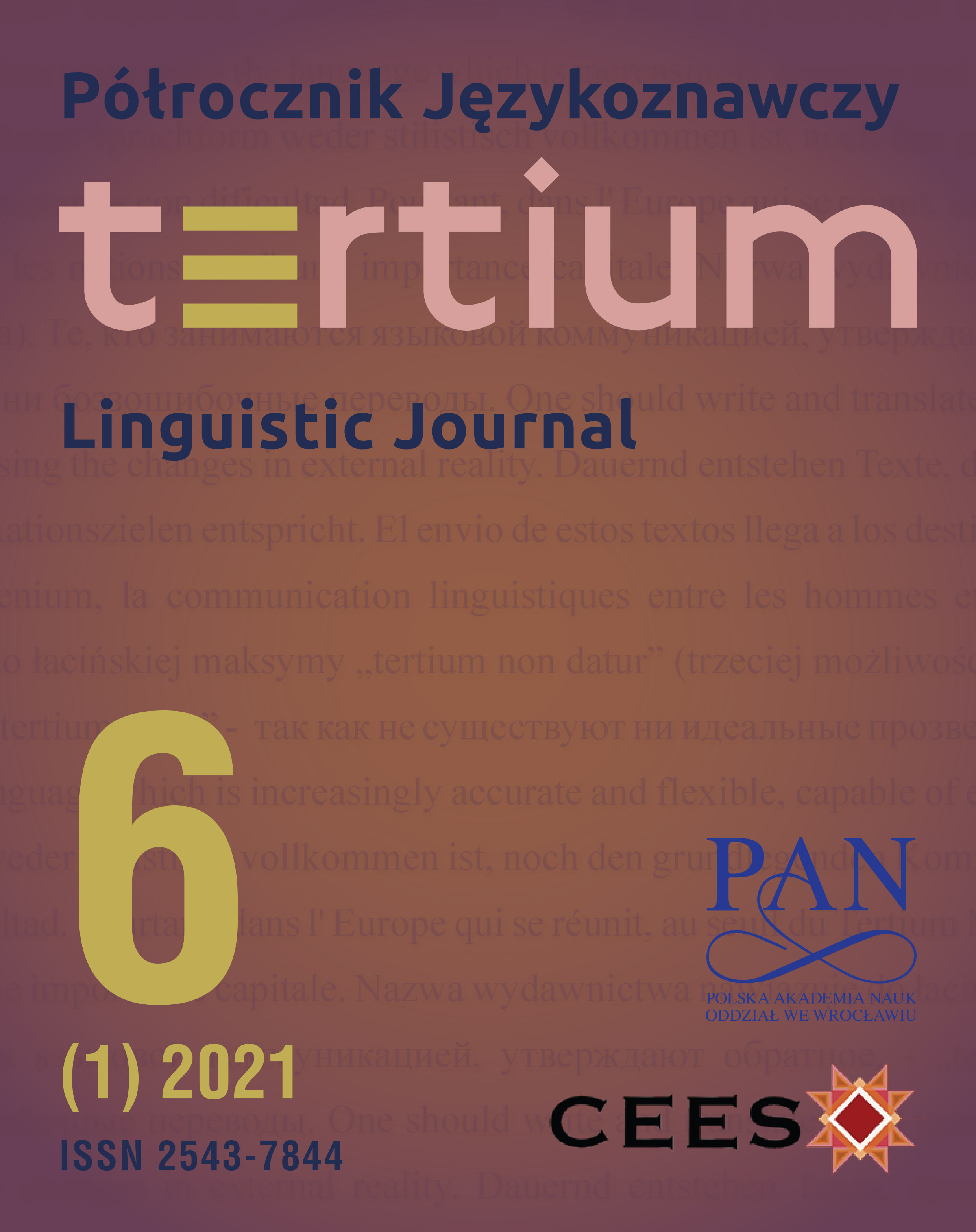
Expansion of contemporary trade and information exchange relations does not seem to alter significantly the multi-layered requirements of inter-cultural communication. In a very important sense of this term, many individual decisions related to communication in a multi-cultural environment are inevitably narrowed to a single-context world. Only to some extent, this unavoidable limitation of communication on the verge of heterogeneous cultures may be overridden by omnipresent stereotypes and ad hoc generalizations. On a more advanced level of communication, it is the stereotypes that may foster the instances of miscommunication and lead to serious misunderstandings. In the paper, a short account on stereotypes in inter-cultural communication is going to be presented, with some examples of actual instances of miscommunication in the Japanese-Polish corporate environment. A proposal of a systematized approach towards the issues and intricacies of Japanese-Polish communication will follow.
More...
Tematem artykułu jest zbadanie wpływu jaki może wywierać wydawca na sposób i zakres odzwierciedlenia w tekście przekładu elementów trzeciej kultury. Omówione zostaną kolejno: kwestia obcości w przekładzie, zjawisko elementów trzeciej kultury oraz zagadnienie funkcjonowania patronatu w systemie literackim. Badanie będzie miało formę analizy translatologicznej. Za materiał badawczy posłuży opowiadanie „The Room in Le Dragon Volant” ze zbioru In a Glass Darkly, autorstwa XIX-wiecznego, irlandzkiego pisarza Sheridana Le Fanu oraz przekład utworu na język polski, „Pokój w gospodzie Le Dragon Volant”, autorki artykułu, pochodzący z tomu W ciemnym zwierciadle. Omówiony zostanie sposób przekładu wybranych wtrętów francuskojęzycznych, zwrotu adresatywnego i dwóch realogizmów oraz zalecenia redaktora dotyczące sposobu ich transpozycji w języku polskim, jak również wynik uzgodnień pomiędzy redaktorem i tłumaczką oraz wpływ ostatecznego rozwiązania na poziom obcości tekstu docelowego. Artykuł zakończy prezentacja wniosków odnośnie wpływu wydawnictwa na przekład elementów trzeciej kultury i roli jaką tłumacz odgrywa w procesie ich adekwatnego odzwierciedlenia w języku docelowym. // The subject of the article is a research into the influence exerted by the publisher on the way and scope of rendering third culture elements in the translated text. The concept of the foreign in translation, idea of third culture elements and the issue of patronage in the literary system will be discussed in turn. The research material is a story in English titled “The Room in Le Dragon Volant” from a collection In a Glass Darkly, written by the 19th century Irish writer, Sheridan Le Fanu and its translation into Polish by the author of the article, published under the title “Pokój w gospodzie Le Dragon Volant”, in a collection W ciemnym zwierciadle. The research will involve an analysis of translation of selected examples of third culture elements, a term of address and two proper nouns in French and the discussion of recommendations from the editor regarding their transposition in the Polish language. The result of negotiations between the editor and the translator and the consequences of the adopted solution for the achieved level of foreignness in the target text will be presented. Finally, conclusions regarding the influence exerted by the publisher on the way of translation of third culture elements and the role of translator in the process of their rendering in the target language will be formulated.
More...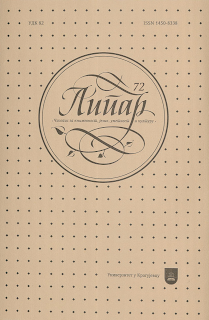
Inclined towards consumerism, modern patriarchal society suffers from denaturalisation which reflects itself through the processes of natural oppression and animal exploitation. Logic of domination upon which patriarchy acts and by which it imposes a superior attitude over nature and nonhuman species, destroys internal values that animals and nature possess, which are not recognized at the capitalist stage where value is regarded through the prism of instrumentalism. This paper aims to disclose the opposite practice which employs the ethics of care and partnership with nature and its elements, through the postulates of ecofeminism oriented towards the life-affirming principle, not the destructive force that patriarchy is prone to. By analysing different ecofeminist approaches, this paper reveals the importance of nature and animals as a unique potential and subjectivity, with a right to freedom and existence. In view of maintaining biodiversity, the animal is redefined from the absent referent, that is, inferior and subdued phenomenon endangered by the masculine hegemony, into a siginificant constituent of human reality by introducing the language of empathy and moral responsibility with the capacity to build a close relationship with the environment from the angle of ecofeminism. It is important to develop ecological consciousness, and accept the time flow needed for renewal of nature, by understanding the importance of the natural surroundings in which man is only a small particle. In such a language, the culture of meat eating has an alternative in the form of vegeterianism, whereas animal and nature become part of moral community, so that hunting, and laboratory exploitation of animals, as well as the use of natural resources are reduced to necessity, not the indispensable. Meat consumption is an attack on animals and an act of support to consumer culture, whereas the refusal of meat is an act of defiance to patriarchal power in the contex of ethics towards nature and its living beings.A conclusion is reached through argumentation that ecofeminism sees the practice ofanimal killing as justified only in special/extreme cases, that is, in situations when it is necessary to save human lives, or when the terrain does not offer other options for human diet. On the other hand, the exclusion of animals from laboratory practices is considered desirable for two reasons: firstly, because animals can feel pain due to their neural structures in the brain, and secondly, because there is no guarantee that a good effect of research on animals will give good results in humans. Following Ynestra King who claims that there is no hierarchy in nature, and that man is not imposed as a superior being over other species by any laws of nature, a conclusion is reached that man has no right as a rational and conscious being with a highly de- veloped system of communication to use that position as an argument or an excuse for demonstrating his agression towards animals which have an equal right to live and be free. The system of nature is declared a sacred space in the value system of ecofeminism in which the life of each individual being is invaluable. Man as a spe- cies has the greatest impact on nature, environment and diversity and, at the same time, he is the only one who can assist nature in the act of renewal, by limiting his appetites so as to sustain the world of nature, including animals as valuable species in it. Protection of animals is; therefore, needed in all segments – they should not be regarded as guinea pigs, meat or trophies, but looked upon as specific beings with their needs and instincts.
More...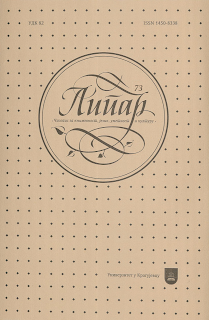
In this paper, we have analyzed specific linguistic and cultural representations of food within the codes of law, regulations and legal acts of the Principality of Serbia from the years 1840, 1845 and 1847. We employed historical discourse analysis, historical sociolinguistics, and general cultural studies of food as a base framework for our research. We have established that food has a marginalized status within the observed documents. We can differentiate between basic food consisting of bread and side dishes (food served for specific categories of citizens, such as soldiers, prisoners, and the ill) and luxurious food. The status of luxurious food is manifested by the presence of lexemes of foreign origin within the list of groceries. We can highlight three types of food discourse: (a) economic discourse; (b) discourse of the state act- ing as a protector of its people; (c) medical discourse. The main motivational factor to engage in talk about food is the economic interest and in those situations one can encounter food in a public place (such as customs, quarantine, farmer’s market). A discourse which governs other types of discourses is the discourse of the state acting as a protector. The state protects its food sources, especially focusing on the protection of the poor. Famine is not addressed directly, but implications of hunger can be discerned from some legal acts. The medical discourse is most prominent in the regulations concerning quarantine and border meetings, where the Fishler’s omnivore’s paradox and incorporation principle dominates the quarantine organization. The state is metaphorically perceived as a body, and the quarantine is a customs official whose job is to check whether a certain food item carries contagious diseases.
More...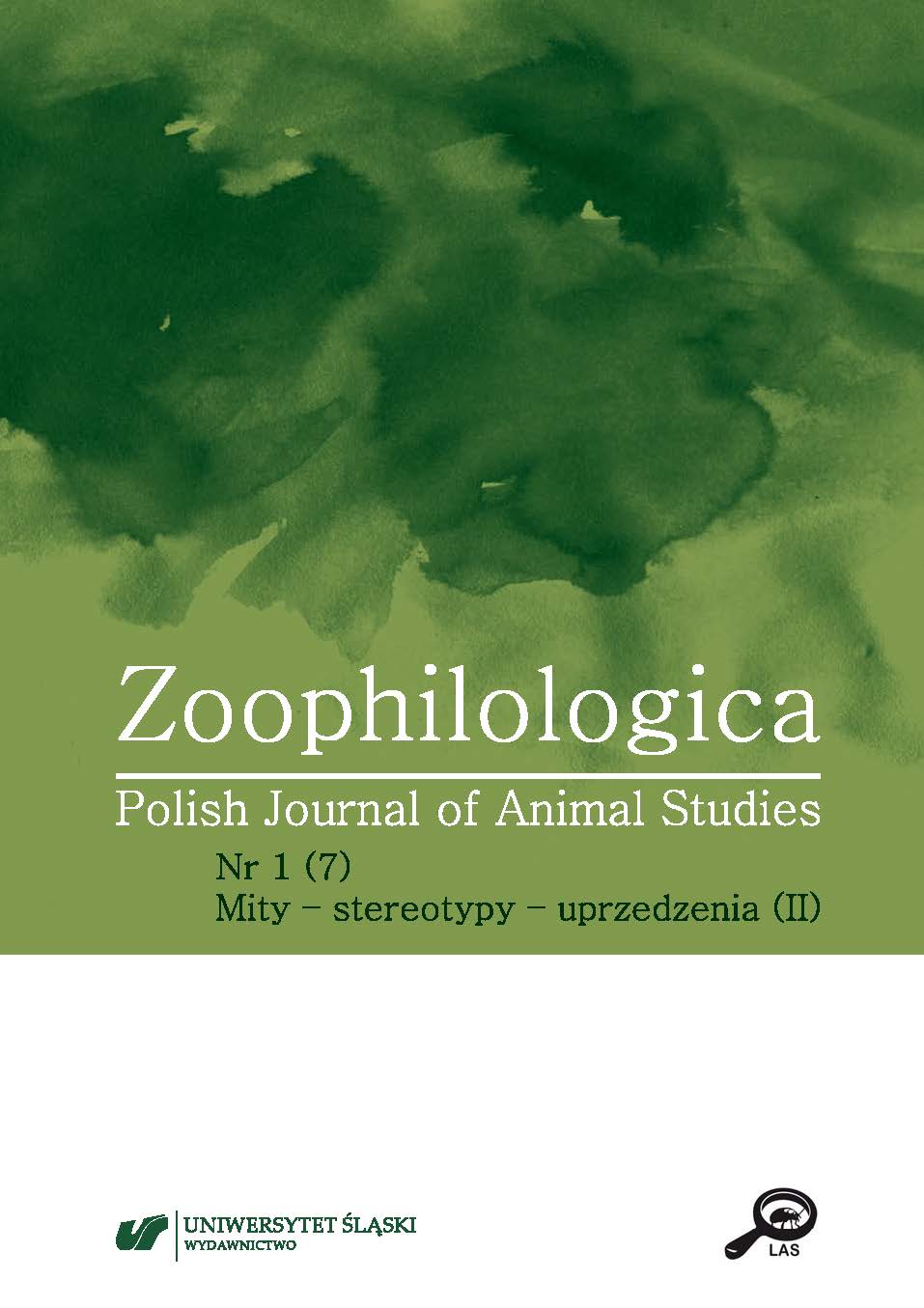
In this day and age, the ovewhelming hopelessness in the face of the anthropocentric paradigm makes thinking about the future of our planet constrained, while in turn reinforcing pesimism and helplessness. The foregoing refers also to the ecocritical humanities, which point to the need of conscious transformation aiming at the containement of the climate catastrophy. However, the said current in humanities requires an assistance from reality-changing tools that would respond to the social needs of the whole, sense, and spirituality, whilst remaining open to non-western religiosity patterns. It is especially worthwhile to keep it in mind upon studying post-secular thought, which marries the rational and the intuitive way of understanding reality.
More...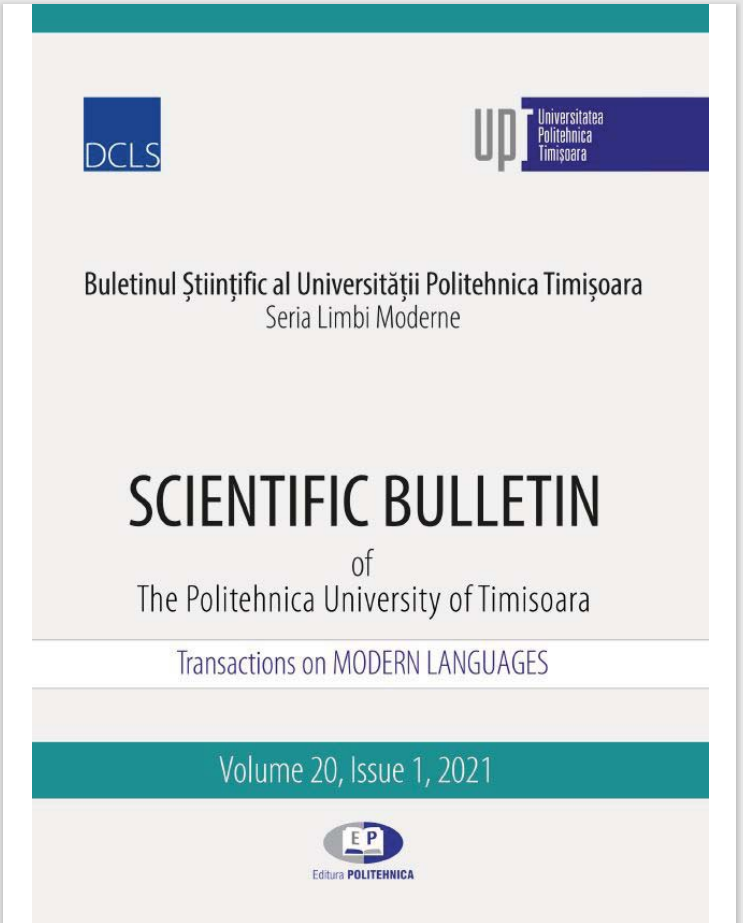
The traditional folkloric substratum of different cultures and the mythological one are still very noticeable nowadays, and the modern person cannot disregard them, as they are intensely reinterpreted, reimagined, and promoted in a vast array of fantasy books, fantasy films, etc. The protagonists of fantasy culture are the imaginary, supernatural, magical, demonic beings, the totemic animals, the fantastic objects, etc. In relevant literature they are defined as mythemes. Moreover, another present-day function was assigned to folkloric, mythological elements (the mythemes) through their animated metamorphosis into the realm of video games, already being annotated, listed online. The present paper aims to emphasise the role of realia-mythemes in traditional and current culture on one hand, and on the other hand to present a series of means of conveying, mainly in Romanian, the fantasy (i.e., folkloric, mythological) realia-words with Russian cultural characteristics (cf. Ба́ба-Яга́ [Ro Baba-Iaga], [En BabaYaga/Jaga]; Богаты́рь [Ro bogatîri], [En bogatyr]; Васили́са Премудрая [Ro Vasilisa Premudraia], [En Vasilisa Premudraya]; Жар-пти́цa [Ro jar-ptița], [En zhar-ptitsa]; Русáлка [Ro rusalca], [En rusalka], etc.). The transfer of realia elements constitutes a complex process that has been drawing the attention of researchers for a long time, especially since there is no “sole” translation solution, and the “ideal” rendering of these units is performed by considering certain intra- and extralinguistic, intra- and extra-translational aspects.
More...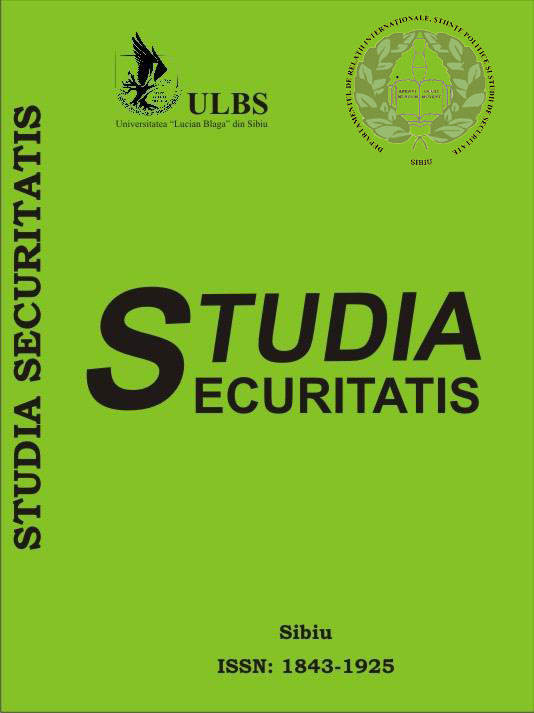
This paper observes some of the most distinguished characteristics of the Islamic State related to the use of modern technology and tries to drawn some important conclusions between the terrorist’s quasi state, modernity and technology. After the examination of the functioning of IS at the peak of its powers between 2014 and 2017, the analysis turns to terrorists’ various online activities. All of them are showing the Islamic State’s reliance on modern technology, especially IT, as one of the most important aspects of its terrorist activities that greatly contributed not only to the effectiveness, but to the essential definition of first modern terrorist quasi-state. The second part of the paper deals with the Islamic State`s fully reliance on technology in its own legitimization (both among Islamist rivals and “infidels”). The celebration and the fascination with modern technology as main IS characteristics make it different from other Islamist terrorist groups, and trying to establish relations between modernity and terrorism based on religious fundamentalism. The paper also tries to find answers to the question whether IS’s ultra-modern techno approach is responsible for its transformation from a classical fundamentalist terrorist group into some kind of modern political ideology and a social movement with totalitarian and murderous characteristics.
More...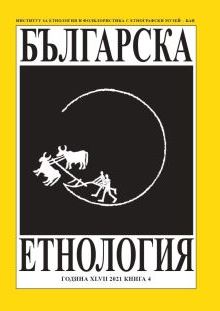
The analysis of sociocultural responses and behavioral strategies to address the consequences of local disasters is aimed at supporting the development of models of rational and socially adequate behavior to prevent and limit the effects of disasters,which could be useful in documents and policies of an official nature among local and central authorities and increase their effectiveness.
More...
Due to the rise of urbanization and globalization over the last few decades, people have become in a way less protected from natural, technological or biological disasters. Suchcalamities are predetermined by the historical and cultural background of the specific affected area and its inhabitants, which form the model and the degree of vulnerability –geographical location, infrastructure development and the level of productivity. The article studies the quality of life after the flood in Varna’s Asparuhovo district and its complex consequences, reflecting at the same time on the attitude of the locals towards various aspects of life, as well as the public health of the people in the affected area. This research presents the different viewpoints of locals, who ponder upon the changes in their lives six years after the flood of 2014. The acquired conclusions can serve both researchers and institutions for the evaluation of the strategies applied in the overcoming of the crisis, and to create new, if necessary,as well as the proper allocation of funds, socio-political reorganization and so forth.
More...
The periods of crisis that certain societies go through change the already established order. They provoke a rethinking of existence and the need to seek protection from above against what cannot be driven away by any means known to man. The late medieval post-Byzantine Balkan churches fully illustrate this. Some of them, especially those in the places directly affected by a certain epidemic, appear after such critical moments, and in their collection of images, the disease itself finds its own place, acquiring at the same time a set of anthropomorphic features. The protection of God or some of His saints is sought after when it comes to acting against the plague. The article tries in an interdisciplinary way (combining history, culturology and theory of art) to emphasize on the image of the plague in the Orthodox Christian image system. The motif of the Dance of Death (Danse Macabre), in which rulers,clergy and peasants are involved, was influenced by the “procession” of the infection throughout Europe and has been repeatedly discussed in the scientific literature.Within the Balkan Orthodox Christian folklore, the plague appears as a strange girl who is constantly scratching herself, or as an old crone - in most cases presented as a witch. People turn to St. Charalambos to be their intercessor before God and to relieve them from the trouble that befell them. The vernacular idea of St. Charalambos as a victor over the plague, which he captured and chained, is reflected in the church’s visual tradition.
More...
After 1944, both the Bulgarian society and economy began to undergo rapid transformations, one of which was the accelerated industrialization. With its development there was a steep increase in industrial mischances and serious accidents at work. This phenomenon became an essential element of the everyday life of the rapidly growing working class in Bulgaria during the 50s and 60s. Naturally, the increasing number of incidents also provoked certain public perceptions, which the ruling Communist Party was extremely concerned about, fearing that they would undermine the image of the regime that state propaganda was trying to implement.For this reason, the tried to monitor, control and direct in a certain direction the public perception of all misfortunes at the workplace. During different periods of its rule, the communist regime used various schemes, methods and means to influence the development of the population’s attitude to industrial incidents, accidents and catastrophes. Although this constant pressure from the authorities and the propaganda have played a significant role in the public point of view, they have not fully achieved the results desired by the party. Without finding an official public expression, society’s attitude to the industrial accidents for the most part did not coincide with that of the regime, which further reinforced the authorities’ fears of a possible wider disclosure of serious industrial catastrophes. This, in turn, further complicated the efforts to minimize such failures.
More...
On April 26, 1986, the accident at the Chernobyl nuclear power plant in Soviet Ukraine occurred and it is known as one of the greatest disasters in the history of nuclear energy. Immediately after the accident, dozens of people lost their lives, hundreds developed the so-called radiation sickness, hundreds of thousands have been evacuated and displaced, and the surrounding flora and fauna were severely affected. The resulting cloud of radioactive particles passed through a number of countries in Northern, Eastern and Southern Europe and led to long-term negative consequences in the health of a significant part of the population. The following article introduces the primary results of a joint historical and ethnological study, conducted both in Russia and Bulgaria, on the memories of contemporaries of this technological disaster which had global consequences. The aim is to analyze how the population today in both countries is reflecting on the Chernobyl accident in terms of its awareness and the degree of the impact; its reaction and preparedness; the measures applied by the responsible institutions; short-termand long-term consequences. The methodology of the study at this stage includes a comparative analysis of the results of in-depth interviews among Russians and Bulgarians conducted in early 2021.
More...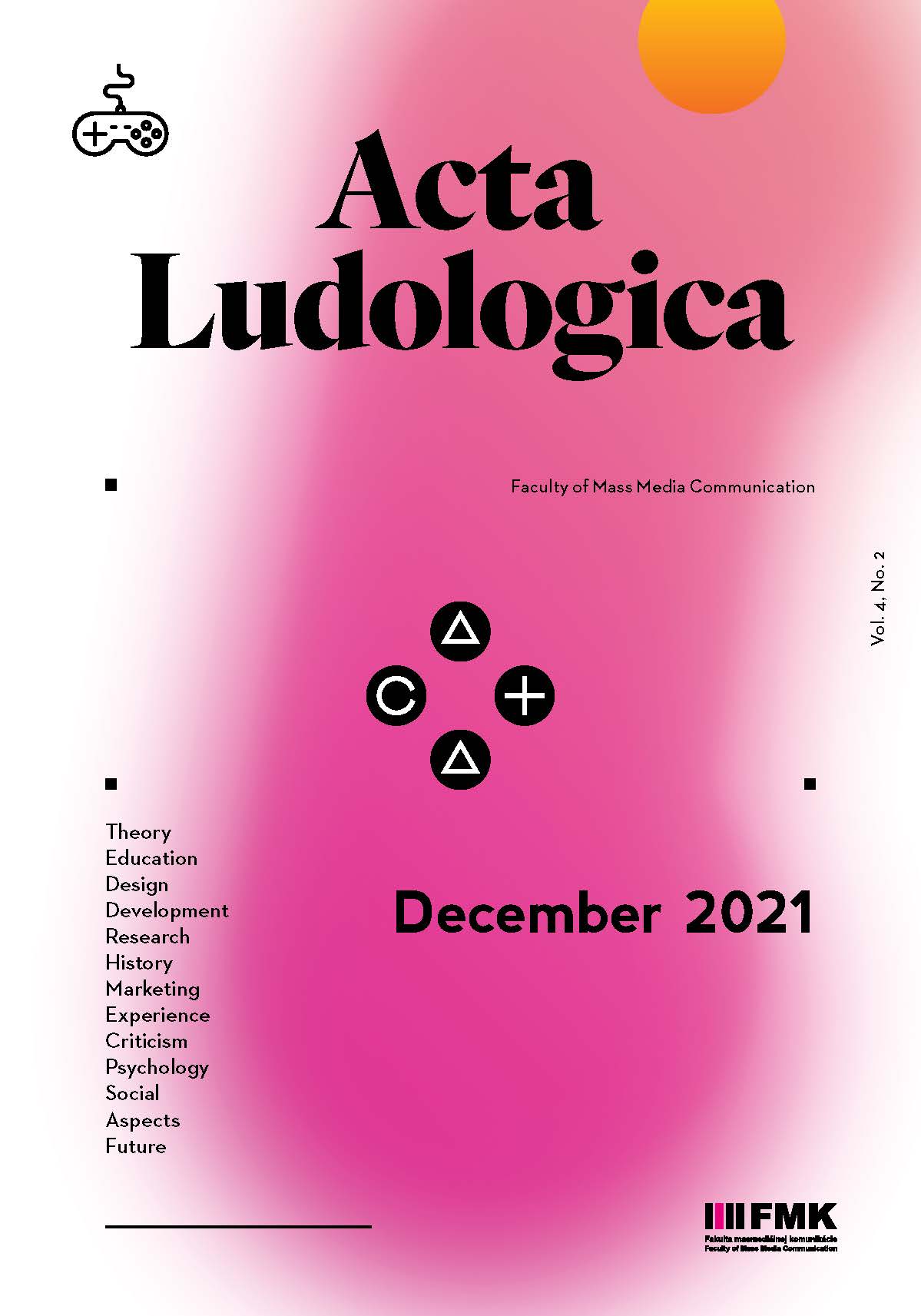
Since the 1980s, the cosplay phenomenon has become a significant aspect of popular culture mainly in Japan, but also in other parts of Asia and in the Western world as well. Nowadays, cosplay events are the most common feature of various fan conventions and there are also dedicated conventions, such as local and international competitions. Websites, social networks, and other forms of social media centred on cosplay activities are just as popular places for the presentation of cosplayers work, and also for cosplay fan conventions. We encounter the definition of this phenomenon mainly in sociological studies, but in its definition from a marketing point of view, and also in term of art studies is less frequent in an academic environment. In the presented study, we look at the cosplayer as an artist with the possibility to become a brand. Cooperation with cosplayers is attractive for different categories of products, not only directly connected with popular culture, e.g., cooperation with bank institutions. On the other hand, it is really necessary to underline the connection with products and texts of popular culture. In the case of self-promotion of cosplayers, games, movies and other pop-culture festivals and events take really important place. This study aims to present a theoretical reflection of the cosplay phenomenon from the perspective of art marketing, as a potential basis for the further research in this area. The situation is illustrated by practical examples.
More...